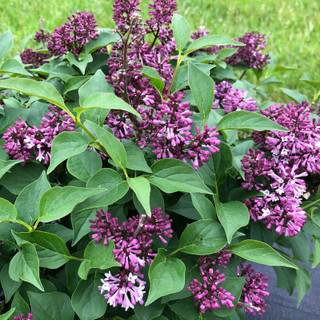
Abelias
Uses:
- Garden Borders
- Container Gardens
- Specimen Plants
Features:
- Attracts Butterflies, Bees & Hummingbirds
- Adaptable to Most Soil Types
- Drought Tolerant
Sunlight:
- Partial Shade to Full Sun
- 4+ Hours of Direct Sun
- South or West Side of Homes
Growing Zones:
- 4-11
- What is My Zone?
Abelias are old fashioned shrubs whose uses in today’s landscapes are just beginning to be recognized once again for their long flowering ability and easy maintenance. They work great as a specimen shrub in your garden bed, or as a beautiful low maintenance hedge along your driveway or sidewalk.
Why Buy Abelia Shrubs Online
Abelia is a semi-evergreen shrub in the honeysuckle family Caprifoliaceae and has been used for centuries in gardens and landscapes around the world. Tiny trumpet-shaped flowers in white to pink with purple tints appear in late spring and continue until fall when the foliage turns a beautiful bronze, red or purple color. Once established, this hardy shrub can be left to its devices and just enjoyed for its often glossy green foliage and lightly scented, delicate flowers. With its easy maintenance requirements and beautiful late spring to fall flowering habit, this classic shrub deserves a place in every landscape.
Whether you are looking for a short compact hedge or a privacy screen, there is an Abelia that will fit the bill and reward you with year-round color and interest. Some popular varieties include Glossy Abelia, Edward Goucher and Kaleidoscope Abelia. Taller varieties like Ruby Anniversary, Sweet Emotions or Canyon Creek Abelia make wonderful standalone specimen shrubs. Shorter, more compact varieties like Pinky Bells or Sunny Anniversary Abelia grow readily in containers to adorn a deck or patio.
Beautiful lightly fragrant white, pink, purple or yellow flowers over a long bloom period
Attractive fall foliage, some varieties are variegated
Attracts pollinators
Grows from 2 to 6 feet tall
Evergreen or deciduous depending on climate
Landscaping Tip: Abelias are available in several varieties, giving the home gardener and landscaper the ability to choose the size that will give the most versatility, whether as a hedge, privacy screen or windbreak, or as a specimen in the garden bed or container.
About Abelias

Glossy Abelia
Asia, Mexico
Bushes
Evergreen
5 - 9
White, Pink
Late Spring, Summer, Fall
Mounded, Spreading, Arching
Bees, Butterflies, Hummingbirds
Heat, Humidity, Drought (once established)
Deer
How To Use Abelia In The Garden
Abelia produces hundreds of tiny trumpet-shaped blooms on the ends of gracefully arching branches. The fragrant flower clusters draw bees, butterflies and hummingbirds throughout late spring to fall. The oval-shaped, glossy dark green leaves are semi-evergreen and can be variegated in some varieties. The foliage often takes on a purplish-bronze to red hue in autumn, adding seasonal interest to gardens.
Abelias have dense growth that makes them useful for creating hedges and privacy screens. They combine readily with smaller shrubs and perennials in a tiered specimen garden or border. Compact varieties grow well in large containers, giving your patio or deck a privacy screen without having to sacrifice ground space. Plant them in full sun when possible, a southern or western exposure is usually preferred.
Abelias Care
Abelias grow well in full sun to partial shade and in fertile, well-drained soil. Plant them in spring or fall when the weather is cool. Maintain consistent moisture, especially during the first two years, aiming for one to two inches of water per week. After establishment, they can tolerate some drought and heat, but perform best with water during dry periods. Apply a slow-release fertilizer formulated for woody plants in early spring to support growth.
Minimal pruning is needed for abelias; remove errant water shoots and rejuvenate older plants by cutting one-third of the oldest branches at the base every few years, ideally in spring. For winter care, amend soil with compost in fall and, in regions with strong freezes, add mulch to protect roots. When growing in containers, use pots with drainage filled with a high-quality potting mix rich in organic matter.
Learn More About Abelia Care

Abelias Companion Plants
Abelias look great in multi-species hedges. Sun-loving shrubs with an upright habit and colorful flowers and/or foliage such as lilacs, viburnum, flowering quince and spirea come to mind and would look wonderful in combination with Abelia.






















